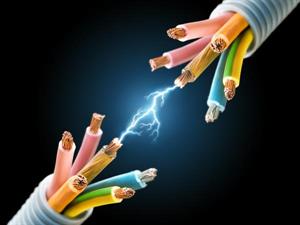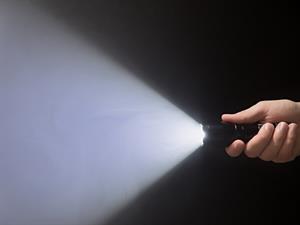
PUMPA - SMART LEARNING
எங்கள் ஆசிரியர்களுடன் 1-ஆன்-1 ஆலோசனை நேரத்தைப் பெறுங்கள். டாப்பர் ஆவதற்கு நாங்கள் பயிற்சி அளிப்போம்
Book Free DemoHave you ever imagined a life without electricity?

Electric sparks between two wires
It is actually difficult to lead our lives without electricity.
Electricity is the most convenient and controllable form of energy. In modern society, it is not easy to lead our life without electricity. From a small phenomenon like lighting our houses to huge engineering applications, electricity plays an integral part.
When we turn 'on' the switch in our rooms, the bulb quickly shines. Our room heater generates heat when it is connected to the pins on the walls. The torch glows when a button is clicked. In all these scenarios, we use electricity, which makes our work easier.

A torch
Without electricity, most of our daily activities would come to a halt. So, it is essential to know its origin and characteristics.
Electric charge:
The origin of electricity lies in electric charges.
Electric charge is one of the basic fundamental properties of all matter, like mass and volume. Coulomb is the unit of measurement for electric charge, and it is denoted as 'C'.
The charge of an electron (e) has a very small numerical value. The fundamental unit of electron charge (e) is equal to 1.6\ C. It means that any charge (q) must be an integral multiple (n) of the fundamental unit of electron charge (e).
Then, the formula is written as
q = ne
Where q is a charge, n is a whole number, and e is the charge of an electron. Using the above formula, one can calculate the number of electrons present in a coulomb of charge.
Where q is a charge, n is a whole number, and e is the charge of an electron. Using the above formula, one can calculate the number of electrons present in a coulomb of charge.
Calculation of electrons present in one coulomb of charge:
Charge of 1 electron,
The formula is,
(or)
Therefore, the number of electrons in 1\ coulomb,
Therefore, 1\ coulomb of charge is equivalent to the charge contained in .
What is electricity?
Electricity is a branch of physics that deals with the flow of electric charges through a conductor.
Electricity is classified into two parts. They are,
- Static electricity
- Current electricity
1. Static electricity:
The study that deals with the electric charges at rest and their effects are known as electrostatics or static electricity.
2. Current electricity:
The study that deals with the electric charges in motion and their effects are known as current electricity.
The study that deals with the electric charges at rest and their effects are known as electrostatics or static electricity.
2. Current electricity:
The study that deals with the electric charges in motion and their effects are known as current electricity.
In this topic, we will learn and understand the concept of current electricity and its applications.